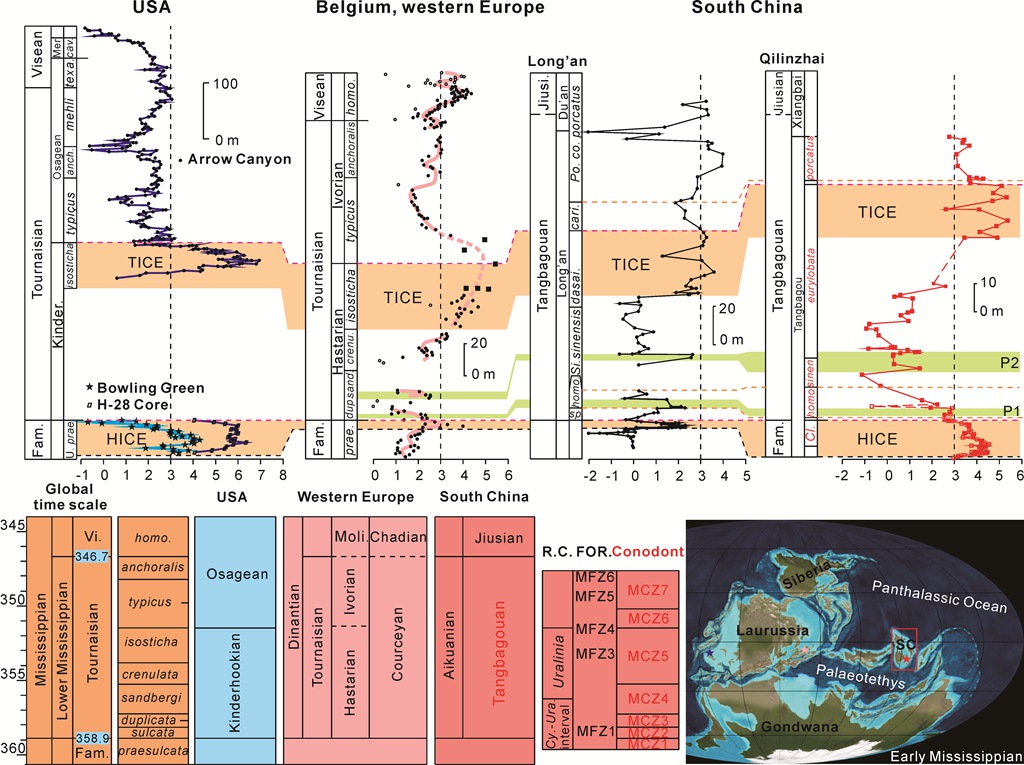The regional Tangbagouan Stage, named from the Tangbagou Formation in southern Guizhou, represents the first Carboniferous stage in China and is essentially equivalent to the global Tournaisian Stage. The Tangbagou Formaiton is a succession of mixed carbonate-siliciclastic rocks that accumulated on a shallow-water platform under normal marine conditions, and the biostratigraphic framework of which was mainly based on brachiopod and rugose coral associations. To constrain the precise age and improve regional and international stratigraphic correlations, Dr. QIE Wekun from Nanjing Institute of Geology and Palaeontology, Chinese Academy of Sciences and his collegues present detailed conodont data coupled to carbon isotopic records of the Tangbagou Formation at its hypostratotype section and use this integrated approach to establish high-resolution bio- and chemostratigraphic framework for the Tangbagou Formation.
In ascending order, seven conodont biozones are established in the shallow-water sediments, including the Cl. gilwernensis-Cl. unicornis, Po. spicatus, Si. homosimplex, Si. sinensis, Si. eurylobata, Ps. multistriatus and Po. co. porcatus zones. Four distinct positive δ13Ccarb shifts (HICE, P1, P2 and TICE) are also observed in this interval. The study shows that:
1) at its hypostratotype section, the Tangbagou Formation equates with the Upper Si. praesulcata Zone (latest Famennnian) to the middle part of the Sc. anchoralis-latus Zone (late Tournaisian);
2) in shallow-water facies, the Devonian-Carboniferous boundary is tentatively placed near the base of the Po. spicatus Zone, and within the falling limb after the peak values of the HICE;
3) the similarity in peak values and magnitude of TICE for the Qilinzhai and Belgian sections indicate that the Euro-asia δ13Ccarb trends may reflect the changes in global mean ocean δ13CDIC, rather than having been overprinted by local carbon cycling;
4) integration of conodont biostratigraphy and δ13C stratigraphy provides a powerful tool for stratigraphic correlation.
The paper was published in Geological Journal, and this research was financially supported by the National Natural Science Foundation of China, Ministry of Science and Technology Foundation Project and State Key Laboratory of Palaeobiology and Stratigraphy, NIGPAS.

Download:
